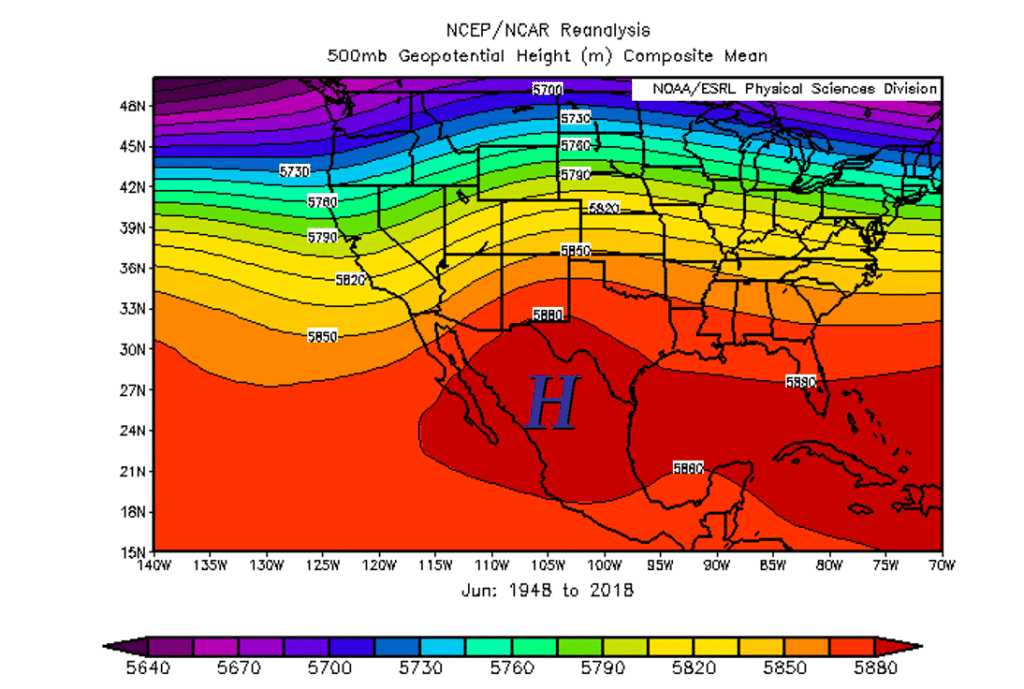Prescott, a city nestled in the state of Arizona, has a rich history that’s intertwined with its unique weather patterns. Understanding the historical weather patterns and their impact on Prescott’s growth reveals fascinating insights into how the region’s climatic conditions have played a vital role in shaping the city’s development, economy, and way of life.

From its early days as a mining town to its modern urban transformation, weather has left an indelible mark on Prescott’s evolution.
Early Weather Patterns and Settlement (1800-1900)
In the early years of settlement from 1800 to 1900, weather patterns played a defining role in the development of Prescott. Pioneers and early settlers were faced with a landscape shaped by seasonal variations, aridity, and occasional extreme weather events.
These weather conditions influenced choices about where to settle, what crops to plant, and how to build homes and infrastructure. The challenges and opportunities presented by the climate during this period forged a deep connection between the people and the land.
As settlers learned to adapt to Prescott’s unique weather patterns, they laid the groundwork for a community that would continue to grow and evolve, always mindful of the profound impact of weather on daily life and long-term development.
Native American Settlement and Weather Conditions
The Native American tribes that originally inhabited the Prescott region were no strangers to adapting to the local weather conditions. The mild temperatures and seasonal rainfall allowed for the cultivation of crops like corn, beans, and squash.
The Yavapai and other tribes, such as the Apache, utilized the region’s unique climate to their advantage, creating sustainable agricultural practices that were closely tied to the weather patterns. Understanding the cycles of the seasons allowed these tribes to thrive in the Prescott area before European settlers arrived.
Impact of Precipitation on Agriculture
In the early 1800s, as European settlers began to move into the Prescott region, they quickly recognized the potential of the fertile land, nourished by regular precipitation. Farming quickly became a viable economic activity, and the weather played a crucial role in determining what could be grown.
According to historical records from the National Weather Service, the Prescott area received consistent rainfall, particularly during the monsoon season. This allowed for a wide variety of crops to be cultivated, from grains to fruit trees.
However, weather was not always favorable. Occasional droughts created challenges for early farmers, requiring them to innovate and develop irrigation methods to ensure consistent growth.
Mining Industry and Climate Challenges
Prescott’s mining industry, particularly gold mining, was heavily influenced by the weather conditions of the region. The climate provided both opportunities and challenges for miners.
Gold was discovered in Prescott in 1863, and the mild weather conditions allowed mining to continue year-round. This contributed to a rapid growth in population and the development of the city.
On the other hand, unpredictable storms and heavy rainfall sometimes led to dangerous working conditions in the mines. Records from the Arizona Geological Survey show instances of floods affecting mining operations, forcing miners to develop new techniques to cope with these challenges.
The mining industry, driven by weather-dependent opportunities and constraints, laid the foundation for Prescott’s early economic growth, setting the stage for future development.
Weather Anomalies and Their Impact (1900-1950)
The early 20th century in Prescott was marked by a series of weather anomalies that had substantial impacts on the city’s growth and development. Unusual weather events, such as unexpected frosts, heatwaves, and storms, challenged the conventional understanding of Prescott’s climate.

These anomalies affected various aspects of life, from agriculture and water supply to infrastructure and community well-being. The lack of advanced forecasting technology during this period meant that these events often caught the community by surprise, leading to significant adjustments and innovations in response.
The experiences during these years provided important lessons that shaped Prescott’s approach to weather and resilience in subsequent decades, forging a legacy of adaptability and awareness.
Droughts and Water Scarcity
The early 20th century was marked by several significant drought periods in Prescott. These droughts had profound impacts on both agriculture and daily life.
A notable example occurred in the 1930s, coinciding with the Great Depression. This period, documented by the United States Drought Monitor, saw widespread water scarcity that affected crop yields and led to economic hardship for many farmers.
Water scarcity also prompted Prescott to invest in water conservation and management practices. Innovations in irrigation technology and the development of reservoirs helped mitigate the effects of drought, ensuring a more stable water supply for the city.
Flooding and Infrastructure Development
Contrary to drought, Prescott also experienced times of severe flooding. The heavy rainfall in the winter months often led to flooding of rivers and streams, particularly in low-lying areas.
In 1927, a significant flood devastated parts of the city, causing extensive damage to buildings and infrastructure. The event led to a reevaluation of the city’s planning and development strategies, with particular attention to flood control and mitigation.
The construction of dams, levees, and stormwater systems, informed by studies from the Army Corps of Engineers, became essential components of Prescott’s infrastructure. These developments reflected a growing understanding of how weather patterns could directly impact the built environment.
nowfall and Impact on Transportation
Prescott’s winters are known for their occasional heavy snowfalls. During the early 20th century, these snow events posed significant challenges to transportation and commerce.
The lack of modern snow removal equipment led to road closures and delays in transportation. This affected trade and daily commuting, making winter a challenging season for residents.
Local historical accounts, such as those found on the Sharlot Hall Museum website, detail how communities would come together to clear roads and assist neighbors during heavy snowfalls. This sense of community resilience was an essential aspect of life in Prescott during this time.
Technological Advancements and Weather Forecasting (1950-1980)
During the period from 1950 to 1980, Prescott saw significant technological advancements in weather forecasting, which had a profound impact on the city’s development and preparedness. The introduction of radar technology, satellite imagery, and computerized models revolutionized the way weather information was gathered and analyzed.
This era marked a shift towards more accurate and timely weather predictions, allowing Prescott to better prepare for and respond to weather events. These advancements not only enhance public safety but also influenced industries like agriculture and construction, enabling them to adapt to weather conditions more effectively.
This period of technological growth laid the foundation for the city’s ongoing resilience and adaptability to its unique weather patterns.
Introduction of Weather Stations
The mid-20th century saw significant advancements in weather forecasting technology. The introduction of weather stations in Prescott allowed for more accurate and timely weather predictions.
These advancements had far-reaching implications for various sectors, including agriculture, construction, and public safety. Farmers could plan their planting and harvesting schedules more efficiently, and construction projects could be better coordinated to avoid weather-related delays.
Data from the National Oceanic and Atmospheric Administration illustrates how weather stations revolutionized local weather monitoring, providing a valuable tool for managing weather-related risks.
Meteorological Studies in Prescott
During this period, meteorological studies gained prominence in Prescott. Universities and research institutions began conducting detailed analyses of local weather patterns, contributing to a broader understanding of climate behavior in the region.
These studies, often found in scientific journals such as the Journal of Applied Meteorology, provided valuable insights into phenomena like monsoons, droughts, and temperature variations. This research laid the groundwork for more informed decision-making in areas like urban planning and natural resource management.
Impact on Agriculture and Infrastructure Planning
Technological advancements in weather forecasting significantly impacted Prescott’s agriculture and infrastructure planning.
Farmers had access to reliable weather forecasts, allowing them to make informed decisions about planting, irrigation, and pest control. This led to increased crop yields and more efficient use of resources.
Similarly, urban planners and engineers could use weather data to design buildings and infrastructure that were more resilient to local weather conditions. Publications from the American Society of Civil Engineers detail the integration of meteorological data into planning and design processes during this period.
The confluence of technology and weather insights provided a strong foundation for growth and development in Prescott, paving the way for the city’s modern era.
Modern Weather Patterns and Urban Development (1980-Present)
From 1980 onwards, Prescott’s urban development has been profoundly influenced by modern weather patterns. The city’s strategic planning has incorporated climate considerations, creating resilient environments to withstand weather extremes like droughts and floods.

These efforts have led to sustainable practices in construction, agriculture, and business, driving economic growth tied to weather conditions. Prescott’s approach reflects a contemporary understanding of its unique climate, fostering innovation, sustainability, and growth.
This modern era showcases how weather continues to shape Prescott, with current trends and future climate changes offering new challenges and opportunities for this evolving city.
Urban Planning in Response to Climate
In recent decades, Prescott’s growth has been significantly influenced by its urban planning, particularly in response to weather patterns and climate considerations.
Modern planning efforts have focused on creating resilient urban environments that can withstand extreme weather events, from droughts to floods. The introduction of green spaces, efficient stormwater management, and sustainable construction practices was shaped by an understanding of Prescott’s unique climate.
Reports from the Urban Land Institute highlight how Prescott has become a model for integrating climate considerations into urban development, showcasing a forward-thinking approach.
Economic Growth Related to Weather Conditions
Weather patterns in Prescott have also played a role in shaping the city’s economic landscape. Industries such as tourism, agriculture, and construction have been closely tied to weather conditions.
For example, Prescott’s mild climate has attracted tourists, leading to growth in the hospitality sector. The weather has also continued to impact agriculture, with modern techniques optimizing growth for local weather conditions. Studies from the United States Department of Agriculture provide insights into how weather has shaped agricultural practices in the region.
Weather-driven economic growth has also led to diversified business opportunities, fostering innovation and entrepreneurship in Prescott.
Sustainable Practices in Construction and Agriculture
Prescott’s growth has been marked by an emphasis on sustainability, particularly in construction and agriculture. This focus has been informed by historical weather patterns, highlighting the need for responsible resource use and resilience.
In construction, sustainable building materials and energy-efficient designs have become standard practices. These innovations were driven in part by the need to create buildings that can withstand Prescott’s variable weather.
Agriculture has seen similar advances, with water-efficient irrigation, crop rotation, and organic farming practices gaining popularity. These methods, supported by research from the Environmental Protection Agency, reflect a conscious effort to align farming practices with Prescott’s weather patterns.
Case Studies: Weather Events that Shaped Prescott
The history of Prescott is marked by key weather events that have played a significant role in shaping the city’s development, landscape, and community. From the Great Drought of 1953, which triggered water conservation measures and agricultural adaptations, to the Flood of 1978, leading to essential changes in infrastructure and urban planning, these events have left an indelible mark on Prescott.
Heatwaves, too, have impacted both health and the economy, driving community preparedness and response. These case studies provide valuable lessons in resilience, innovation, and the intricate ways weather patterns can define a city’s growth, culture, and identity.
The Great Drought of 1953
- Impact on Water Supply
- Effect on Agriculture and Economy
- Response and Innovations
The Flood of 1978
- Devastation and Infrastructure Damage
- Community Response
- Long-term Impact on Urban Planning
Heatwaves and Their Impact on Health and Economy
- Health Considerations
- Economic Impact on Energy and Agriculture
- Community Preparedness and Response
These case studies illustrate pivotal moments in Prescott’s history where weather events prompted significant change, adaptation, and growth. By examining these events, we can gain a deeper understanding of how weather patterns have continuously shaped Prescott’s development.
Climate Change and Future Implications
Climate change poses a complex challenge for Prescott, with potential implications for its weather patterns, economy, infrastructure, and community well-being. Predicted shifts in temperature, precipitation, and the frequency of extreme weather events may reshape the city’s landscape in profound ways.
Scientific research and predictive models offer valuable insights, but uncertainty remains. As Prescott continues to grow, the city’s adaptive strategies, focus on sustainability, and commitment to understanding its unique climate will be essential in navigating the uncertainties of a changing climate and ensuring a resilient and prosperous future.
Current Climate Trends
Prescott, like many regions worldwide, is experiencing changes in climate. These changes, documented by the Intergovernmental Panel on Climate Change, include shifts in temperature, precipitation patterns, and extreme weather events.
These trends have implications for Prescott’s weather patterns, potentially affecting everything from agriculture to infrastructure.
Predictions for Prescott’s Weather Future
Predicting future weather patterns is a complex task, but scientific models provide some insights. These models suggest that Prescott may experience more frequent and severe weather extremes, including heatwaves, droughts, and storms.
Research from institutions like the National Center for Atmospheric Research provides valuable forecasts that can inform Prescott’s planning and preparedness efforts.
Impact on Population Growth and Urban Planning
The potential changes in Prescott’s weather patterns due to climate change have far-reaching implications for population growth and urban planning. Ensuring a resilient, sustainable future requires a comprehensive approach, considering how changing weather patterns may affect all aspects of life in Prescott.
Organizations like the World Meteorological Organization offer resources and guidelines to help cities like Prescott navigate the challenges and opportunities presented by our changing climate.
Education and Public Awareness
Education and public awareness have been vital components in understanding and adapting to Prescott’s unique weather patterns. Through educational programs, community involvement, and effective media communication, Prescott has fostered a well-informed community capable of responding to weather challenges and contributing to sustainability efforts.
Collaborative initiatives with national organizations, local schools, and community groups have ensured that weather education and preparedness are accessible to all residents, shaping a more resilient city attuned to its environmental context.
Educational Programs on Weather and Climate
Prescott’s educational institutions have played an active role in enhancing public awareness about weather patterns and climate change. From school curricula to community workshops, there has been a concerted effort to educate residents about the unique weather characteristics of the region.

Programs supported by the National Science Foundation have contributed to this educational outreach, creating a more informed community that can engage with weather-related issues effectively.
Community Involvement in Weather Preparedness
Community involvement in weather preparedness has been a key aspect of Prescott’s growth. Local initiatives have sought to engage residents in emergency preparedness, water conservation, and sustainable practices, all tailored to the area’s weather patterns.
Partnerships between local governments, NGOs, and community groups, such as those found on the Federal Emergency Management Agency’s website, demonstrate how community-led efforts have contributed to a weather-resilient Prescott.
Media and Weather Communication
Media has played an essential role in weather communication in Prescott. From daily weather forecasts to alerts during extreme weather events, media outlets have kept the community informed and prepared.
Collaboration with organizations like the National Weather Service has ensured accurate and timely weather information, contributing to public safety and awareness.
FAQs: Historical weather patterns and their impact on Prescott’s growth
How have weather patterns historically affected Prescott’s economy?
Weather patterns have played a significant role in shaping Prescott’s economy, influencing industries such as agriculture, mining, construction, and tourism. From favorable weather conditions boosting crop yields to weather challenges prompting innovation, the local climate has been a driving factor in economic development.
What measures has Prescott taken to deal with extreme weather events?
Prescott has invested in infrastructure like dams, levees, and stormwater systems to mitigate flooding. Additionally, technological advancements in weather forecasting, community education, and sustainable construction practices have all contributed to preparedness and resilience against extreme weather events.
How is climate change expected to affect Prescott’s weather patterns?
Climate change may lead to shifts in temperature, precipitation, and the frequency of extreme weather events in Prescott. Predictive models suggest potential increases in heatwaves, droughts, and storms, which could have implications for various aspects of life, from agriculture to urban planning.
Conclusion
Historical weather patterns and their impact on Prescott’s growth offer a captivating glimpse into how a city’s development can be intertwined with its climate. From the early days of settlement and industry to modern urban planning and sustainability efforts, weather has been a constant factor shaping Prescott’s identity.
Understanding these patterns provides valuable insights into Prescott’s resilience, innovation, and adaptability. It reveals how the city has navigated the challenges and opportunities presented by its unique weather conditions, crafting a growth story that is as complex as it is inspiring.
With the looming uncertainties of climate change, Prescott’s weather story is far from over. The city’s future will undoubtedly continue to be shaped by its weather, demanding ongoing adaptation, innovation, and community engagement. Prescott’s history of weather-driven growth offers valuable lessons and hope for a resilient and sustainable future.



Leave a Comment
You must be logged in to post a comment.